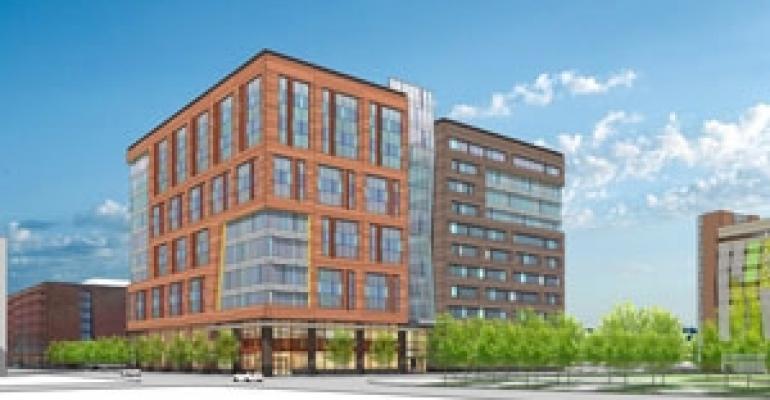Carrying over a theme that marked much of last year, the disparity in demand for office properties in central business districts (CBDs) in 24-hour cities and those in suburban areas continues to be wide and is not likely to disappear anytime soon. Businesses remain worried about the subdued pace of U.S. economic growth and the impact of a potential Euro-crisis and, as a result, are holding off on large-scale expansions.
When they do expand, they have plenty of options to choose from, and are showing a strong preference for class-A buildings in gateway markets.

On a national basis, the office sector is showing signs of a sustained recovery. The sector has by now had five consecutive quarters of positive net absorption, including 6 million sq. ft. in the first quarter of 2012, according to a report from Reis Inc., a New York City-based research firm. Asking rents went up 1.6 percent year-over-year, to $28.10 per sq. ft. The vacancy rate fell another 40 basis points, to 17.2 percent.
But the hitch is that vacancy is still more than 500 basis points above its cyclical low point of 12.5 percent in 2007, and employment figures are showing only moderate improvement. In May, the national unemployment rate remained the same as the month prior, at 8.2 percent, the U.S. Bureau of Labor Statistics reports, and non-farm industries added just 69,000 new jobs.
Through the summer and early fall, new U.S. jobs will likely grow by between 100,000 and 150,000 a month, according to Robert Bach, senior vice president and chief economist with brokerage firm Grubb & Ellis. In other words, all signs point to a slow and sluggish recovery in the office market, rather than a fast-paced one.
“Everybody is pretty nervous right now about what’s going on in Europe and companies are reluctant to take on expansion space,” Bach says. “Vacancies are declining; rents are flat for the most part, but increasingly modestly in the best buildings in a few markets. But overall, the office market is not setting the world on fire right now. It’s a half-speed recovery.”
What’s more, there continues to be a wide disparity between office fundamentals in CBDs and those in suburban areas. For example, global brokerage firm Cushman & Wakefield reports that in the first quarter, the average vacancy rate in CBDs across the country fell 100 basis points compared to a year ago, to 13.5 percent. Direct asking rents went up 2.4 percent, to $37.93 per sq. ft.
In contrast, the overall vacancy rate for the country stood at 16.7 percent—more than 300 basis points above the CBD figure. Asking rents averaged $27.93 per sq. ft.
Prime space
This trend will continue for the rest of the year, with most of the new leasing activity occurring in CBDs in gateway cities, including New York, Washington, D.C., Boston, Seattle and San Francisco. Any market that benefits from the presence of technology, energy or health care industries is well positioned for space absorption and rental growth, according to Alan L. Pontius, senior vice president and managing director with Marcus & Millichap Real Estate Investment Services, an Encino, Calif.-based firm.
In fact, arguably the strongest office market in the country today is San Francisco Bay Area, where many of the country’s largest technology firms are located. Recent and upcoming office moves in the region include Facebook’s 1-million-sq.-ft. lease in Menlo Park, Twitter’s 212,000-sq.-ft. lease at 1355 Market Street in San Francisco proper and YouTube’s 102,000-sq.-ft. lease at 900 Cherry Ave. in San Bruno. As a result, Marcus & Millichap forecasts that San Francisco will register the greatest effective rent increase in the country this year, at 10.2 percent, to $35.59 per sq. ft.
Landlords in many other parts of the country, especially those with office buildings in tertiary locations, won’t be so lucky. In addition to near-term concerns about new job creation, they face long-term concerns about the viability of their space in a market where businesses continue to shrink the amount of square footage allotted to each employee, Pontius notes. More and more people are opting to live and work in CBDs, where they have ready access to mass transportation, restaurants and entertainment venues. If that’s not possible, some decide to work from home or from so-called “office hotels.”
That means that there will be less need for office space than in years past and that some properties will have to be converted to other uses or offer bottom-dollar rates to survive.
“Ultimately, there is a sense that the demand side of the equation long-term will be modified and will be measured differently” than it has been, Pontius says.
View the Top Office Owners
View the Top Office Developers

